Introduction

Search engines, especially Google, continuously refine their algorithms to ensure that users get the most relevant, high-quality results. Among these refinements, Google’s Spam Updates play a crucial role in combating low-quality or manipulative practices. For SEO professionals, understanding these updates is vital because they can directly impact rankings, traffic, and overall website visibility.
This blog will walk you through what a Spam Update is, why Google rolls it out, its impact on SEO, and the best practices you should follow to stay safe.
What is a Spam Update in SEO?
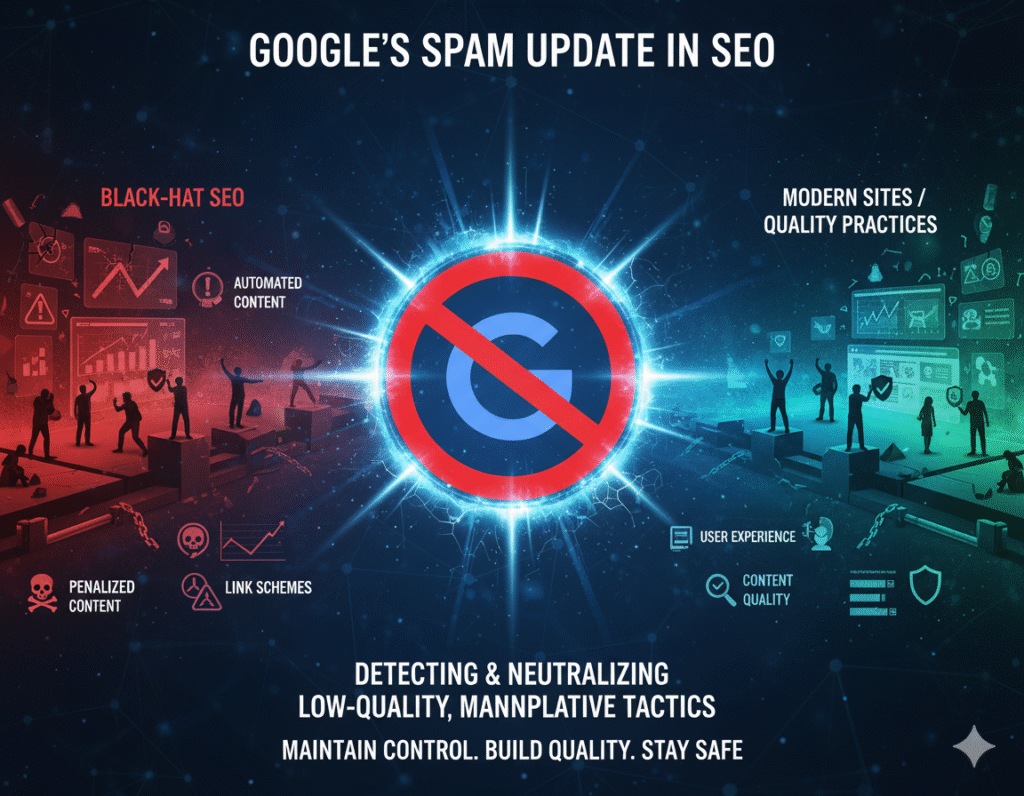
A Spam Update is a Google algorithm adjustment specifically aimed at detecting and neutralizing spammy tactics. These include black-hat SEO techniques, automatically generated content, link schemes, cloaking, and other manipulative practices that violate Google’s Webmaster Guidelines.
Spam Updates are rolled out periodically to strengthen search quality and protect users from misleading or harmful websites.
Why Does Google Roll Out Spam Updates?
- To Maintain Trust: Search results should provide users with credible, trustworthy content.
- To Fight Manipulation: Many websites try to game the system through keyword stuffing, link farming, or hidden text.
To Improve User Experience: Spam-free results ensure better browsing, safer clicks, and more accurate information.
Key Areas Targeted by Spam Updates
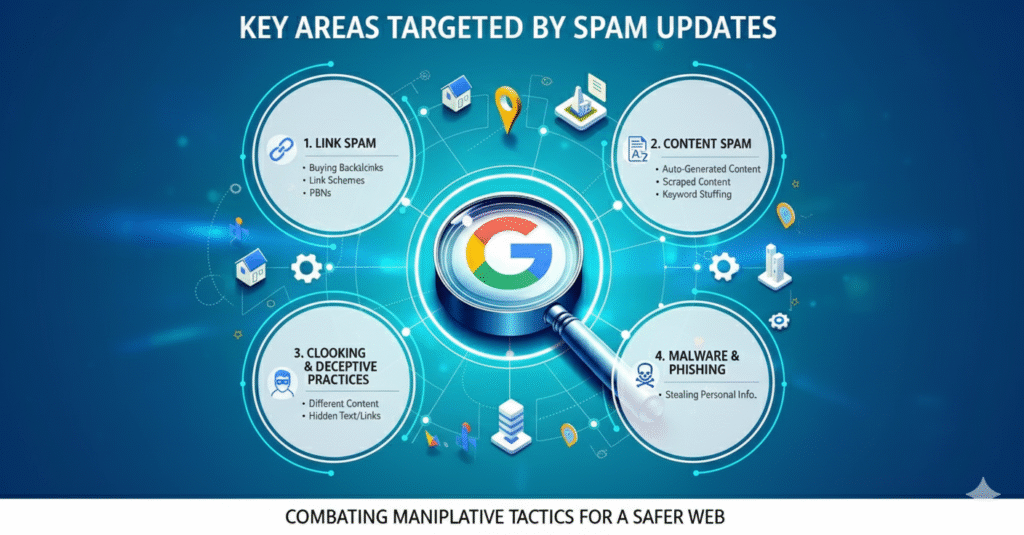
1. Link Spam
Google cracks down on unnatural link-building methods like buying backlinks, participating in link schemes, or using PBNs (Private Blog Networks).
2. Content Spam
Low-quality content such as auto-generated articles, scraped text, or keyword-stuffed pages are often demoted or deindexed.
3. Cloaking and Deceptive Practices
Showing different content to search engines and users, or hiding text and links, is heavily penalized.
4. Malware and Phishing Sites
Spam Updates also protect users from harmful websites that trick visitors into downloading malicious software or stealing personal information.
Impact of Spam Updates on SEO
- Websites using manipulative tactics may see a sharp drop in rankings and traffic.
- Legitimate websites may benefit as spammy competitors lose visibility.
- Sites with thin or duplicate content may also face reduced visibility.
- Overall, search results become cleaner and more reliable.
How to Stay Safe During a Spam Update
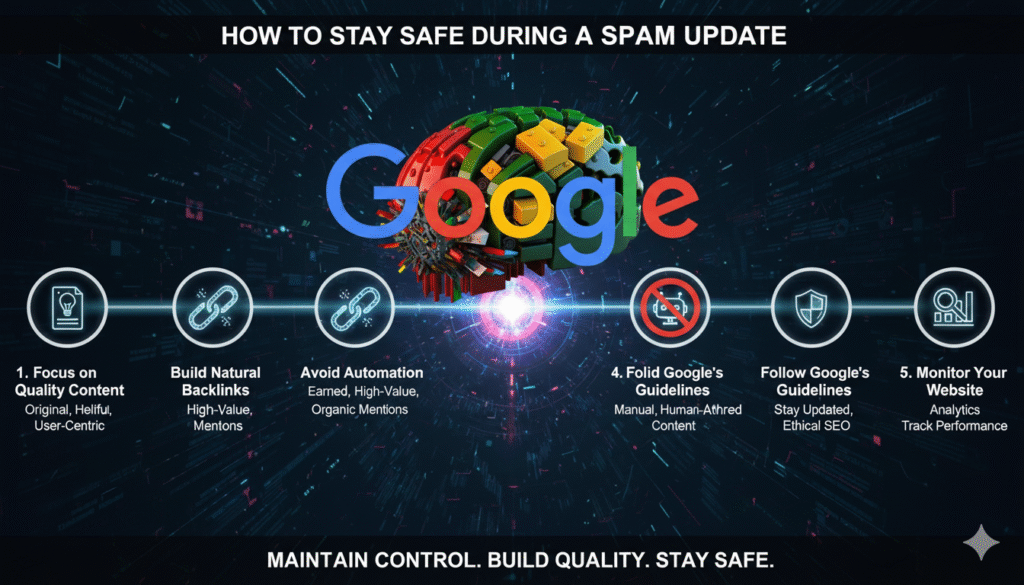
1. Focus on Quality Content
Always publish original, helpful, and relevant content that serves user intent.
2. Build Natural Backlinks
Earn backlinks through high-value content, guest posting, and organic mentions — not by buying links.
3. Avoid Automation
Don’t rely on auto-generated articles, spun content, or bots.
4. Follow Google’s Guidelines
Stay updated with Google’s Search Essentials.
5. Monitor Your Website
Use Google Search Console and analytics tools to keep track of performance and identify sudden drops after updates.
Common SEO Practices That Trigger Spam Updates
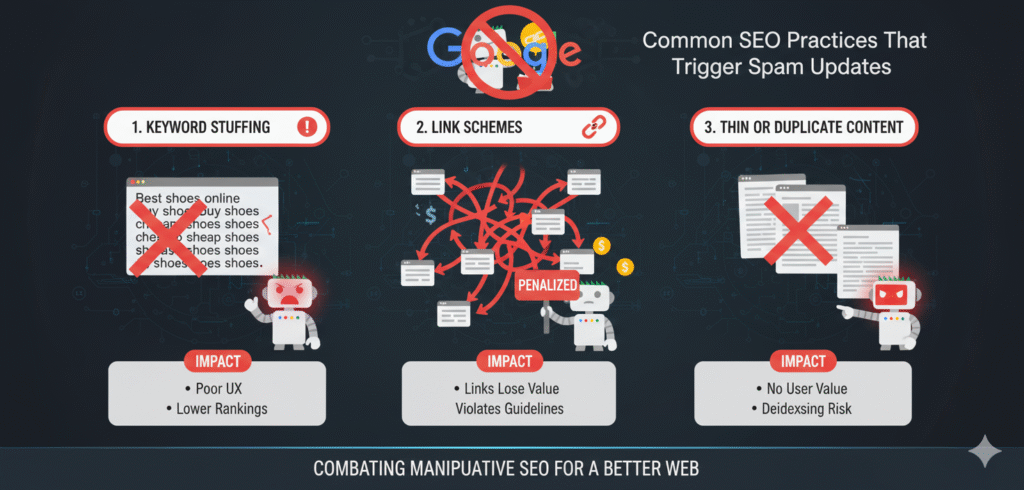
Google’s Spam Updates specifically target websites that use manipulative techniques. Here are some of the most common practices:
1. Keyword Stuffing
This is the excessive use of keywords in an unnatural way. Instead of improving rankings, it makes content unreadable and signals to Google that the site is trying to trick the system. For example: “Best shoes online buy shoes cheap shoes shoes shoes.”
Why it’s harmful:
- Provides poor user experience.
- Google’s algorithm easily detects it and lowers rankings.
2. Link Schemes
Websites that buy or exchange backlinks in bulk to manipulate PageRank are heavily penalized.
Why it’s harmful:
- Links lose value if they are not earned naturally.
- Paid or irrelevant links violate Google’s guidelines.
3. Thin or Duplicate Content
Pages with very little useful content or copied from other sources are considered spammy.
Why it’s harmful:
- Offers no real value to the user.
- Can lead to deindexing of entire sections of a site.
Best Practices to Protect Your Website from Spam Updates
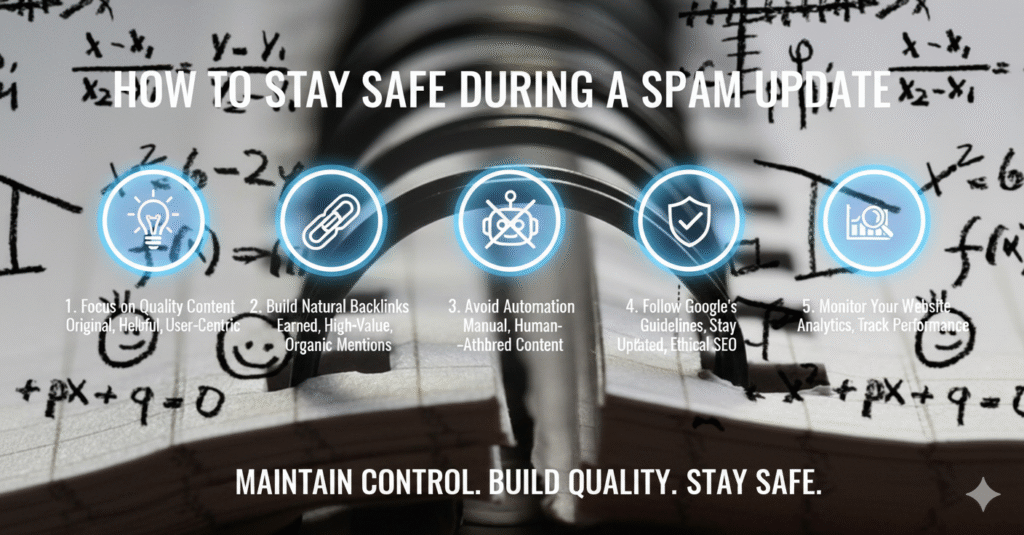
1. Create Helpful, Original Content
Focus on E-E-A-T (Experience, Expertise, Authoritativeness, Trustworthiness). Content should answer user questions thoroughly, provide unique insights, and be written for humans, not just search engines.
2. Build Authority Naturally
Earn backlinks from relevant, high-quality sources through guest blogging, PR campaigns, and partnerships. Remember, quality > quantity.
3. Ensure Technical SEO Compliance
Make sure your site is well-structured, mobile-friendly, and fast-loading. Use schema markup to help Google understand your content better.
4. Stay Updated with Google Announcements
Follow Google Search Central, SEO blogs, and trusted forums. Knowing when updates roll out helps you respond quickly if you notice ranking fluctuations.
5. Regularly Audit Your Website
Use tools like Google Search Console, Ahrefs, or SEMrush to identify broken links, duplicate content, or spammy backlinks before Google flags them.
Conclusion
Google’s Spam Updates are designed to make the internet safer, cleaner, and more reliable for users. While they can be challenging for websites using questionable tactics, they are an opportunity for genuine, high-quality sites to shine.
For SEO professionals, the key takeaway is simple: play by the rules, focus on value, and prioritize the user. Doing so ensures your site not only survives but thrives with every update.